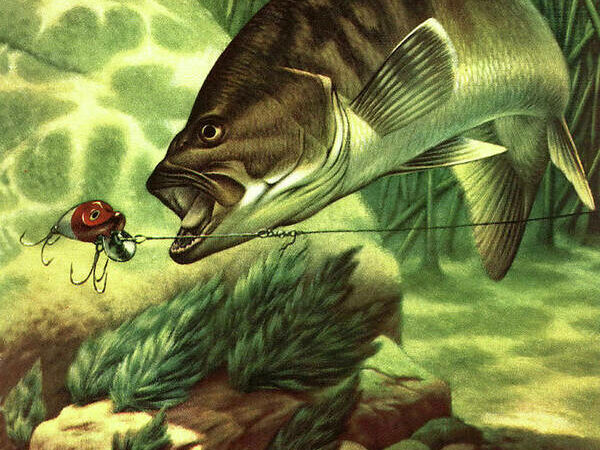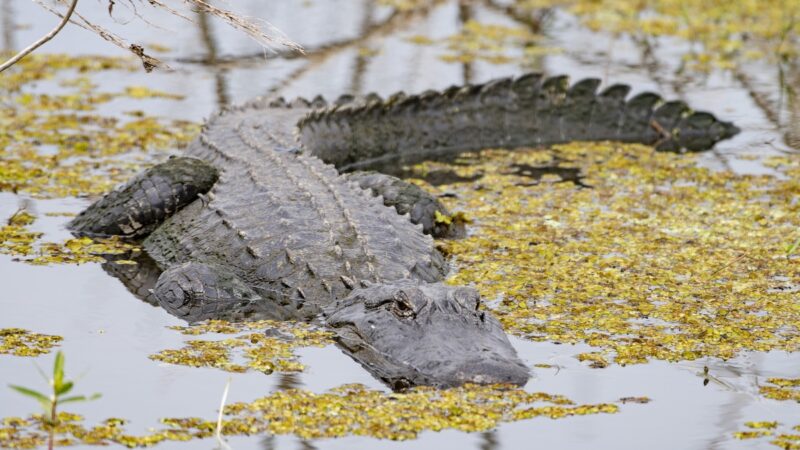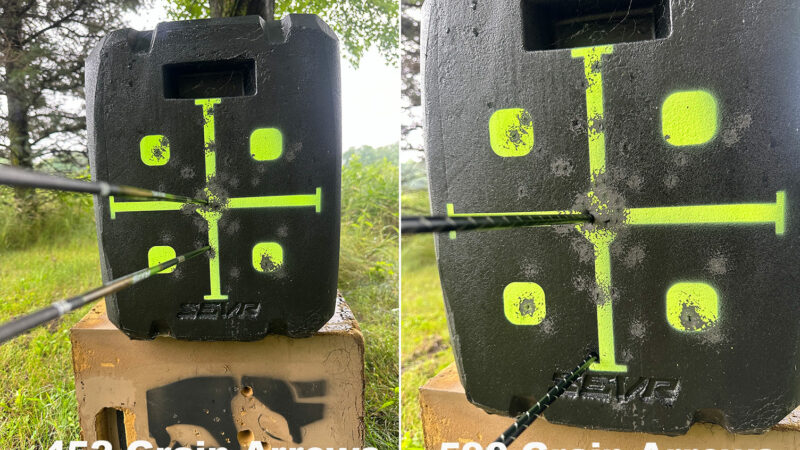How to Find and Hunt Grouse in Successional Habitat
Upland bird hunters are a unique group of individuals. They’re well known for being very picky about which gauge to use, or which shot size is best for certain hunts, and they can be especially opinionated about whether a pointer or a flusher is the best choice for a hunting companion. While there are arguments about each of those topics, there’s one thing that upland hunters can all agree on, ruffed grouse have earned their title of ‘King of the Woods’.
Until recently, I hadn’t hunted ruffed grouse, even though I grew up in a historically productive state. While I’ve seen a few flush during deer drives or scouting missions in my lifetime, I never committed the time and energy into pursuing them due to their dwindling numbers. Pennsylvania has seen a severe drop off in grouse populations in the last 20 years due primarily to habitat loss.
At the end of October, I was given the opportunity to head to northern Minnesota with onX Hunt and Camp Chef to pursue the ‘King of the Woods’ in some of the best ruffed grouse habitat the U.S. has to offer. While there, I learned an immense amount about their habitat, forage, and general grouse behavior. Most importantly for you, I learned how to dial in preferred grouse habitats using modern day mapping technology. Here’s what I learned and how you can apply it to your future grouse hunts to find more success.
What is Preferred Ruffed Grouse Habitat?
Ruffed grouse don’t just live anywhere. In fact, they need a rather specific type of habitat to survive in. These upland birds require cover, plenty of ground forage, and safe locations to nest and roost to avoid predators. For ruffed grouse, there’s nothing better than early to mid-successional habitat.
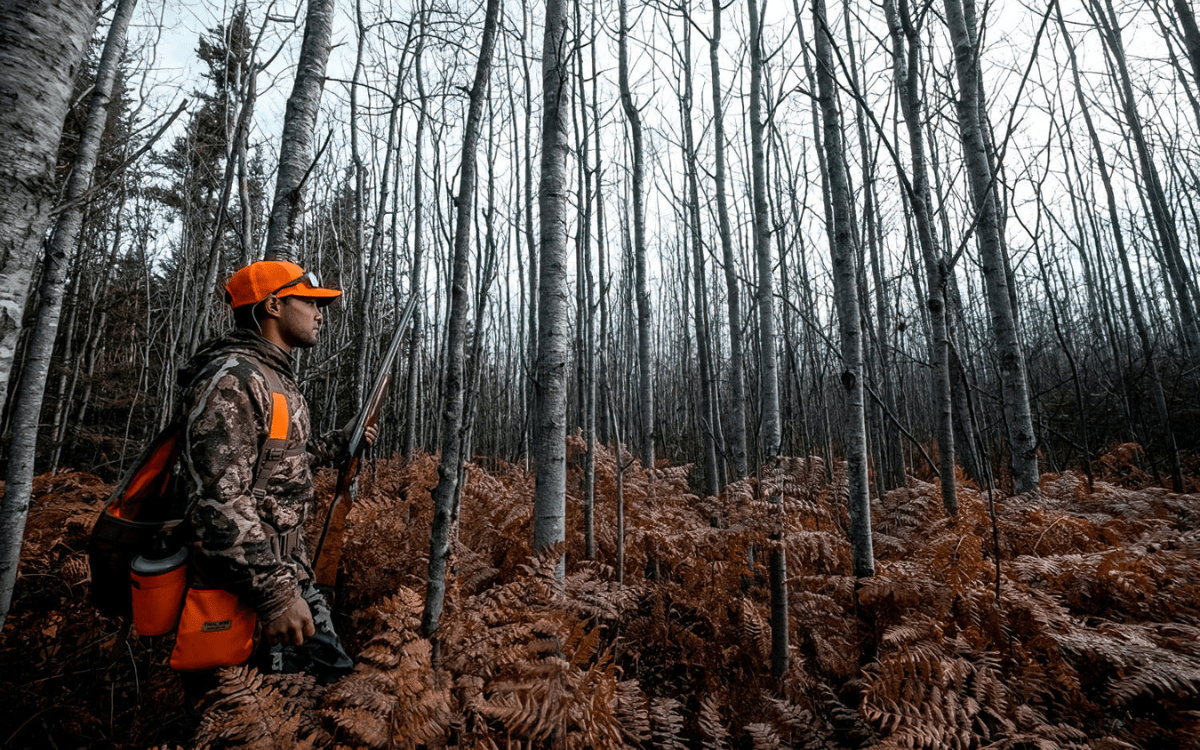
Early to mid-successional habitat is described as a landscape that has growth in the 3- to 15-year-old range. Typically following a disturbance like clear cutting, this habitat has had time and sunlight to grow back into a low canopy thicket. In Minnesota, these thickets were primarily made up of deciduous fast growing softwoods like aspen, birch, and alder.
What makes these areas so appealing to ruffed grouse is the immense amount of cover and forage. Where we spent most of our time, there was forage seemingly everywhere. With an abundance of tag alders, hazel brush, wild clover, wild strawberry leaves, catkins, dogwood berries, aspen buds, and high bush cranberry, there was a plethora of food amongst the cover they needed to stay safe from predators.

Now, if you find yourself wondering how to locate grouse in what could be expansive old clear cuts you’re in luck. I learned that ruffed grouse don’t typically just live in the middle of their preferred habitat. Rather, they typically live along the edges of it. The vast majority of our flushes came while walking logging roads through the middle of these old clear cuts, or on the edges of the clear cuts where the successional growth met with older, more open timber.
In layman’s terms, when you’re looking at clear cuts you plan to hunt, focus on the edges and transition lines.
How to Use onX to Locate Early to Mid-Successional Habitat
Finding a 10-year-old clear cut might sound difficult if you’re unfamiliar with today’s digital mapping tools. Unless you know of a cut that happened locally about 10 years ago, you might be scratching your head trying to figure out where you can locate and hunt ruffed grouse in the habitat I described earlier.
The good news is, it’s actually quite easy to locate this successional habitat using the onX hunt app. With layers for every state like young aspen forests, historic timber cuts, historic timber disturbance, and even ruffed grouse management areas (RGMA’s), the power to find and scout for ruffed grouse habitat is right at your fingertips.
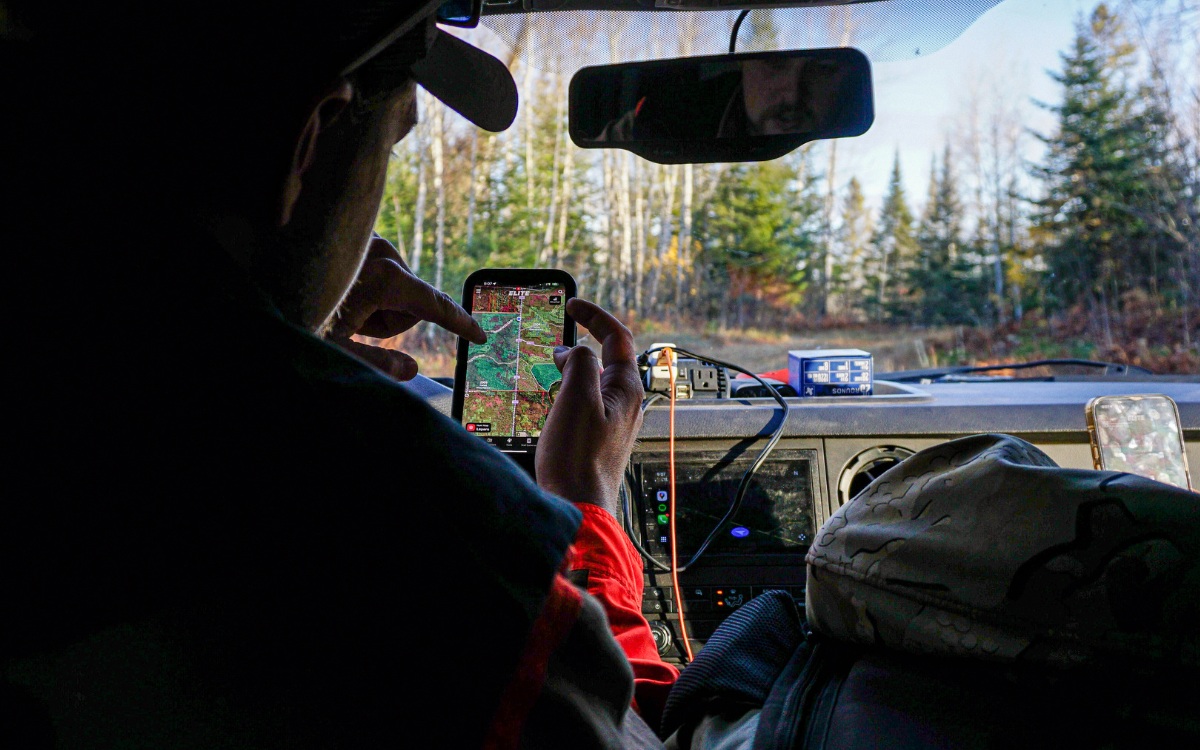
To help walk you through the process of scouting and finding these areas, below is what my mapping looked like when we were trying to locate grouse habitat.
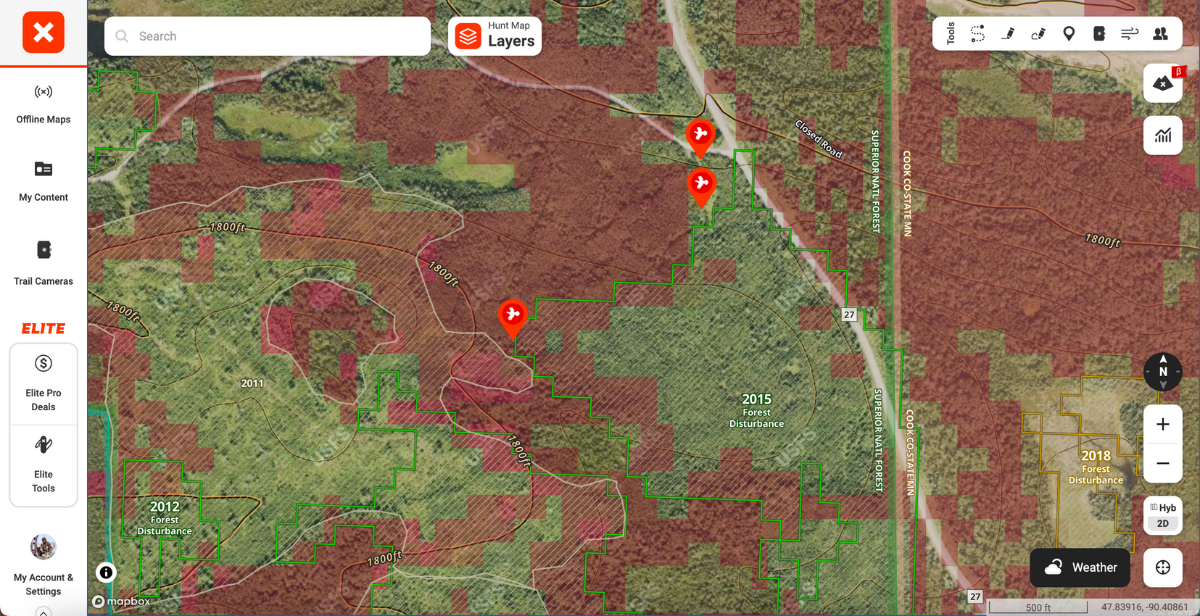
As you can see, the three grouse waypoints (marking flushes) are all on the transition edges of the differing habitats. By using the forest disturbance layer, our group was able to hone in on a large tract of successional growth and let the pointers do the rest of the work for us. As we worked along the edges using the overgrown logging roads and wind to our advantage, we managed three flushes in just under half an hour.
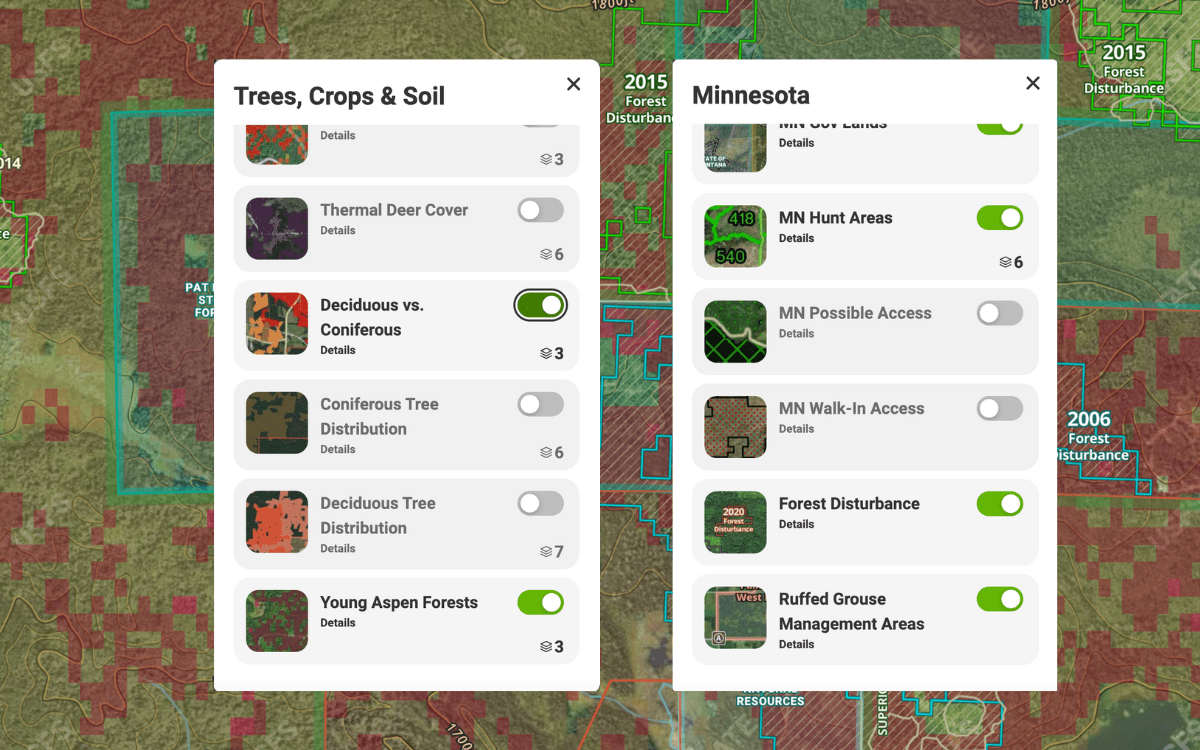
Finding forest disturbance areas within the past 8 to 12 years was, thankfully, incredibly easy. All of the different disturbances are labeled with the exact year in the app. These areas were likely either logged or burned, creating the perfect successional growth for grouse to call home.
Along with the forest disturbance, another key was to hunt the transition edges that had young aspen forests as opposed to older hardwood forests. While the young aspen forests had a higher canopy and less ground cover than the thicker successional growth, there were still some small pockets of hazel brush and tag alders for the grouse to feed on. Walking the transition lines between two favored feeding areas was a recipe for success on this hunt. To find the different forest types in the app, turn on the young aspen forests, deciduous vs. coniferous, and forest disturbance layers. These three overlays on the map will help you differentiate where the differing habitats are and give you an in-depth overview of the hunting area before you take a step out of the vehicle.
Without the ability to use onX to scout the vast areas available to us in northern Minnesota, locating these hot spots would be like finding a needle in a haystack.
How to Hunt Successional Habitat Once You’ve Found It
Now that you’re familiar with using the onX hunt app to locate these preferred grouse habitats, the fun part begins. On this trip, I had the pleasure of hunting over some incredible pointing dogs, English setters to be exact. As we tried to stay along the transition edges of the successional habitat, the setters would weave in and out of the open older growth timber and the younger successional growth trying to pick up fresh scent. The setters were equipped with GPS collars and a bell to alert us of a point.
Each time the dogs went on point, we quickly made our way towards them and bracketed the area we believed the grouse to be in. With a small group, we were able to send flankers to the sides and one person in to flush the bird out of the cover. This gave our group the best chance of getting a clean shot at the lightning-fast birds when they flushed.
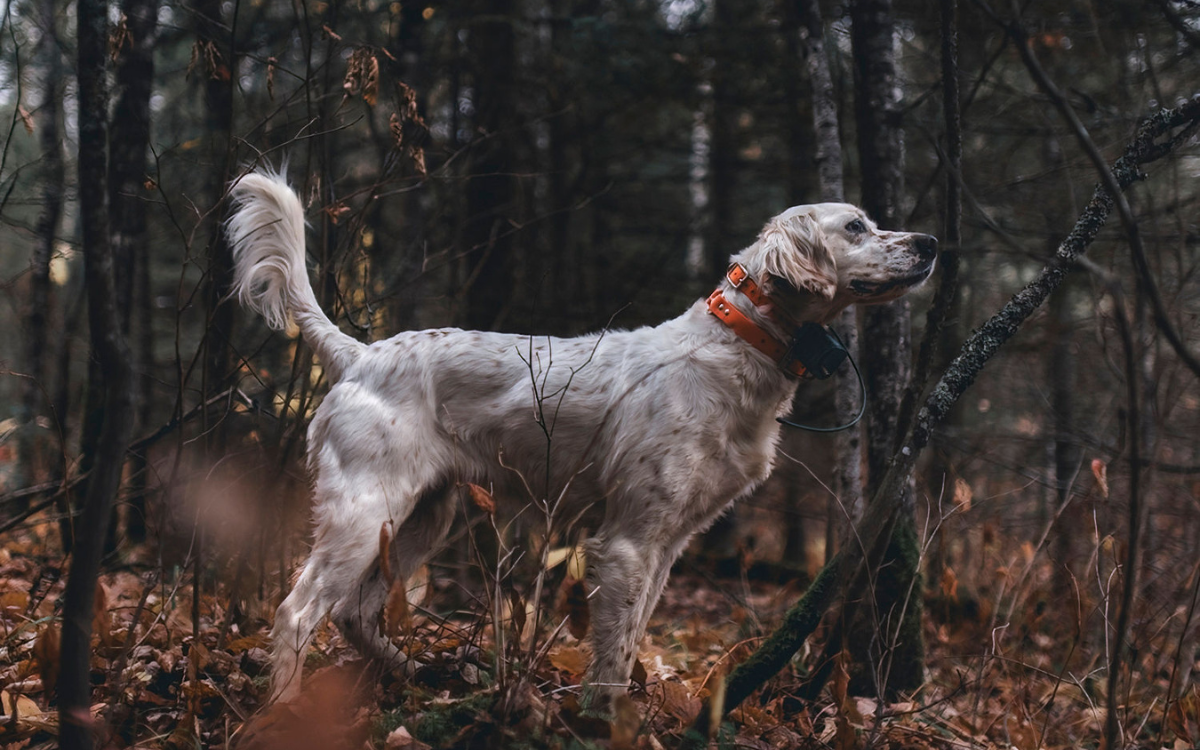
As for making the shot, that’s on you. Ruffed grouse flush fast and, in successional habitat, there can be a lot of cover you need to thread your shots through. Proper form is key. Make sure to set your feet and swing through rather than rush the shot. For my hunt, I chose a lightweight Stoeger Condor 20-gauge that I could mount and swing quickly, and paired it with 7 ½ Federal Premium Upland copper plated shot.
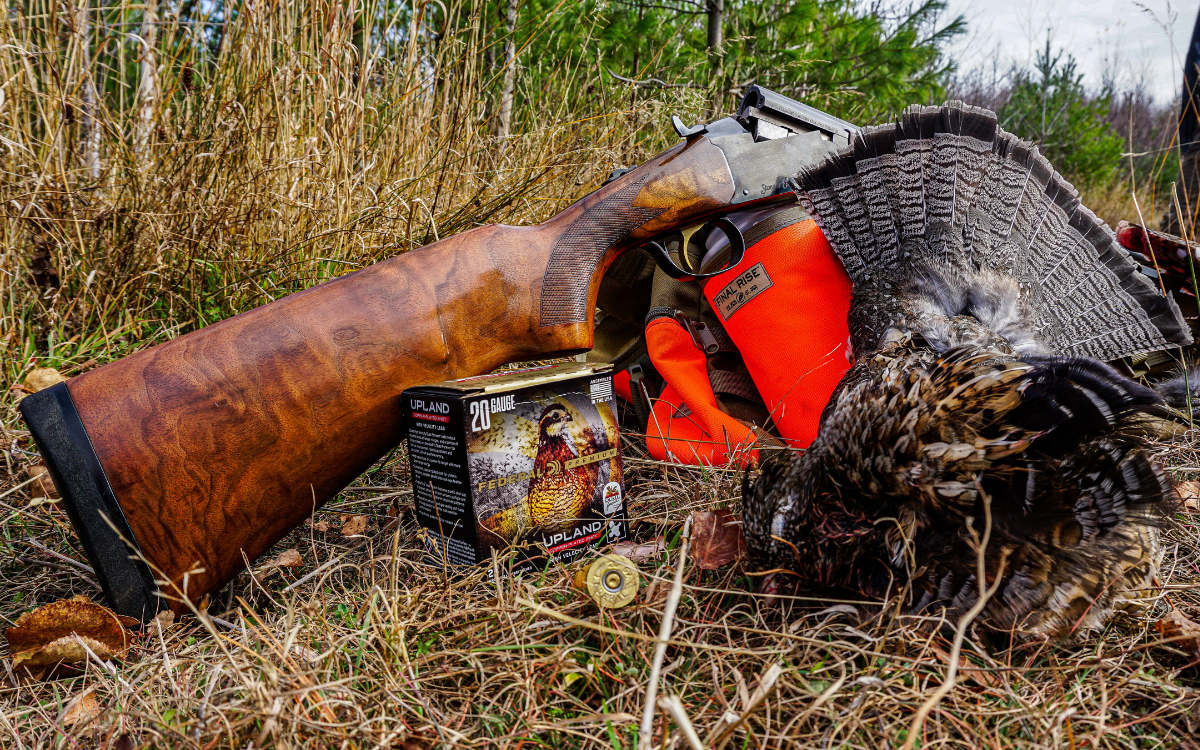
If you were to hunt these areas without the help of a working dog, you might not produce as many flushes, but it’s certainly doable. For a solo hunter, work high percentage areas like logging roads or transition edges. That will give you the best chance to produce some natural flushes. In a small group, focus on the same areas, but staying 30 to 50 yards apart while covering ground.
No matter how you choose to hunt them, chasing the ‘King of the Woods’ is one of the most exhilarating upland hunts you can experience. Their flushes are fast and furious, and they’re incredibly intelligent about when and how they flush. Hunting over some world class working dogs made this hunt that much sweeter. Whether it’s your first ruffed grouse hunt, or you’re just looking to find more success, focusing your efforts on early to mid-successional habitat is a worthwhile endeavor and will undoubtedly provide you with more opportunities on your next hunt.
The post How to Find and Hunt Grouse in Successional Habitat appeared first on Outdoor Life.
Source: https://www.outdoorlife.com/hunting/how-to-hunt-grouse-successional-habitat/


